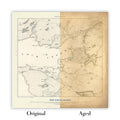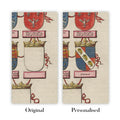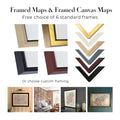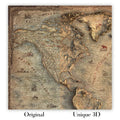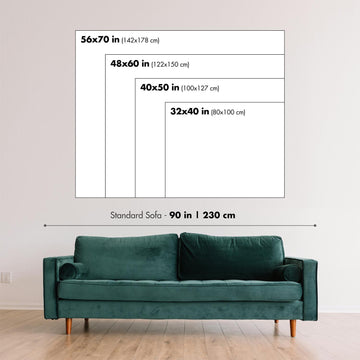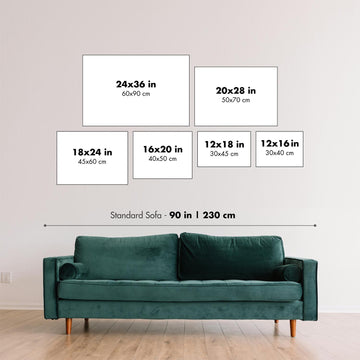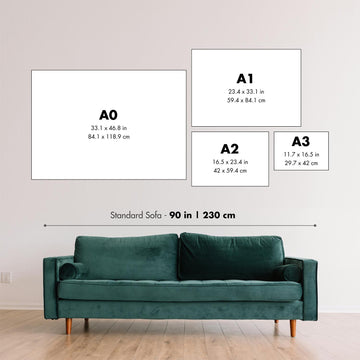



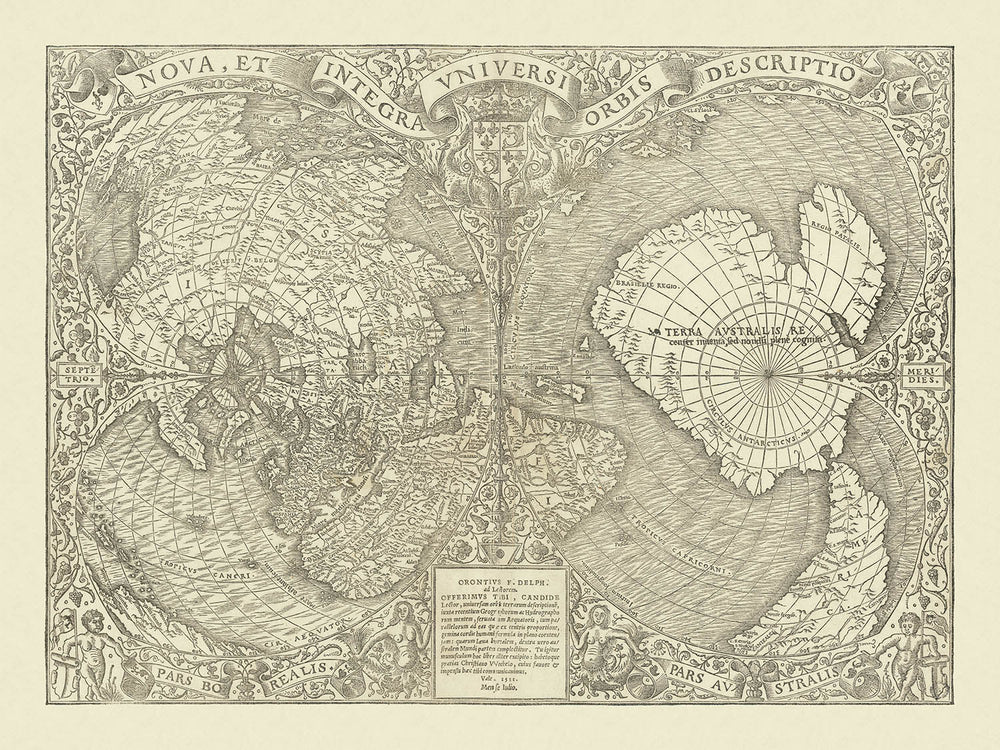

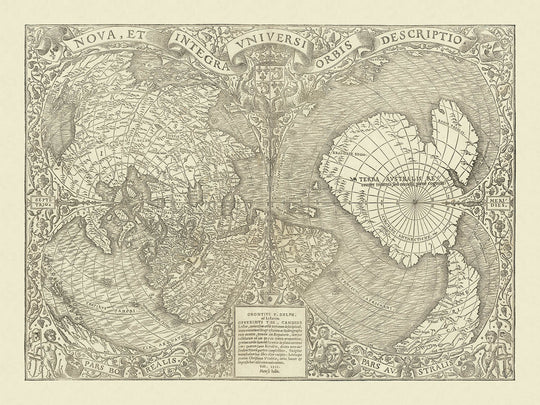








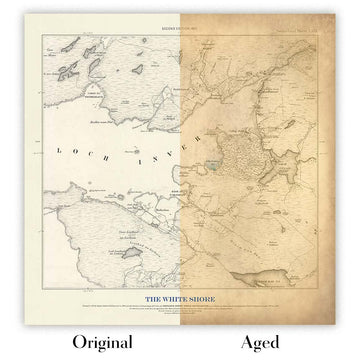
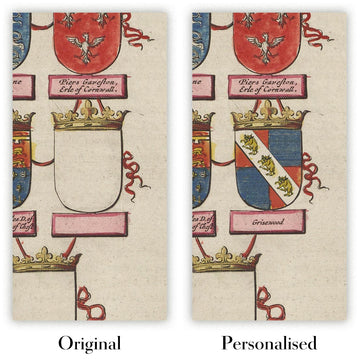
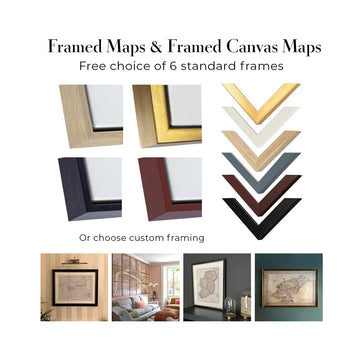


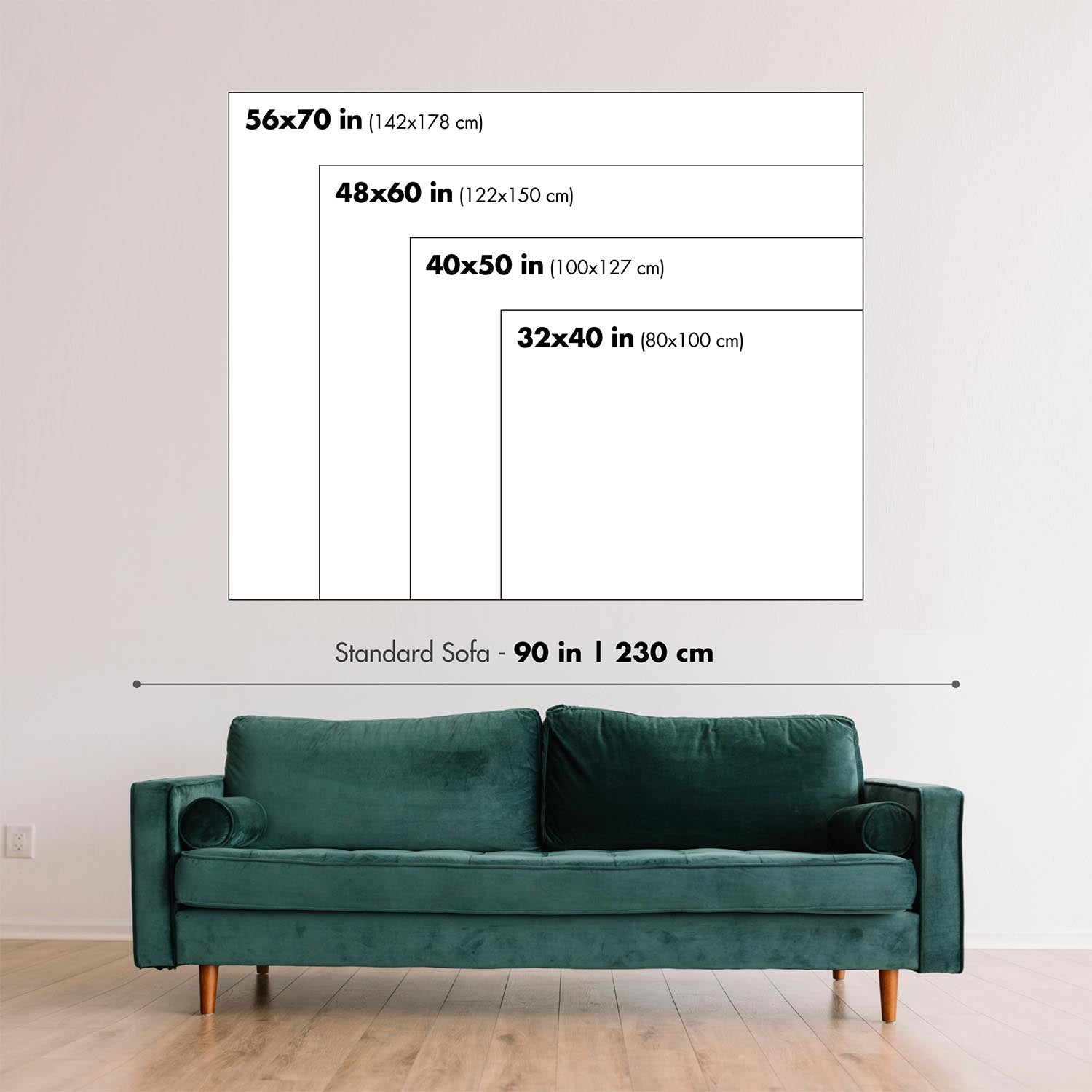
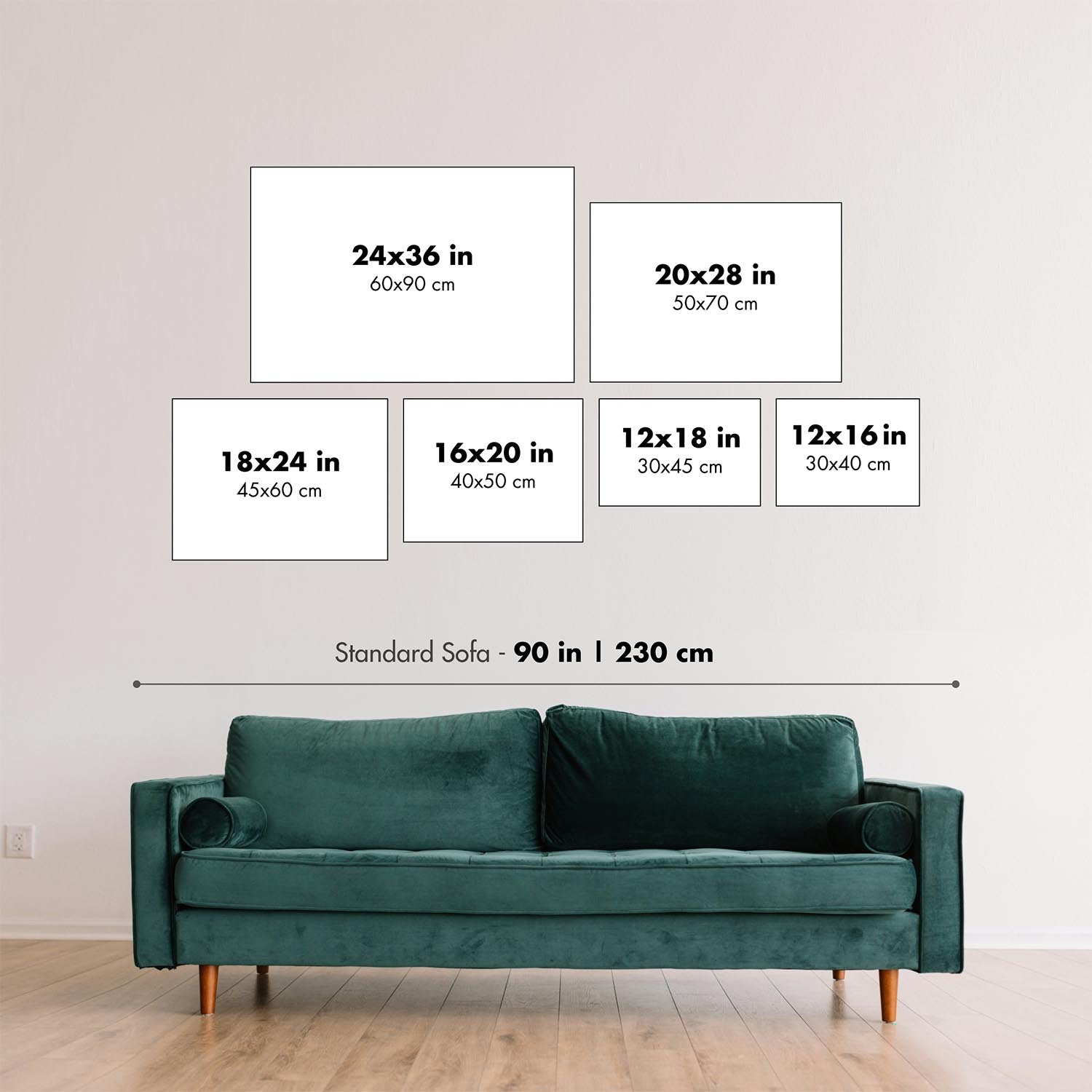
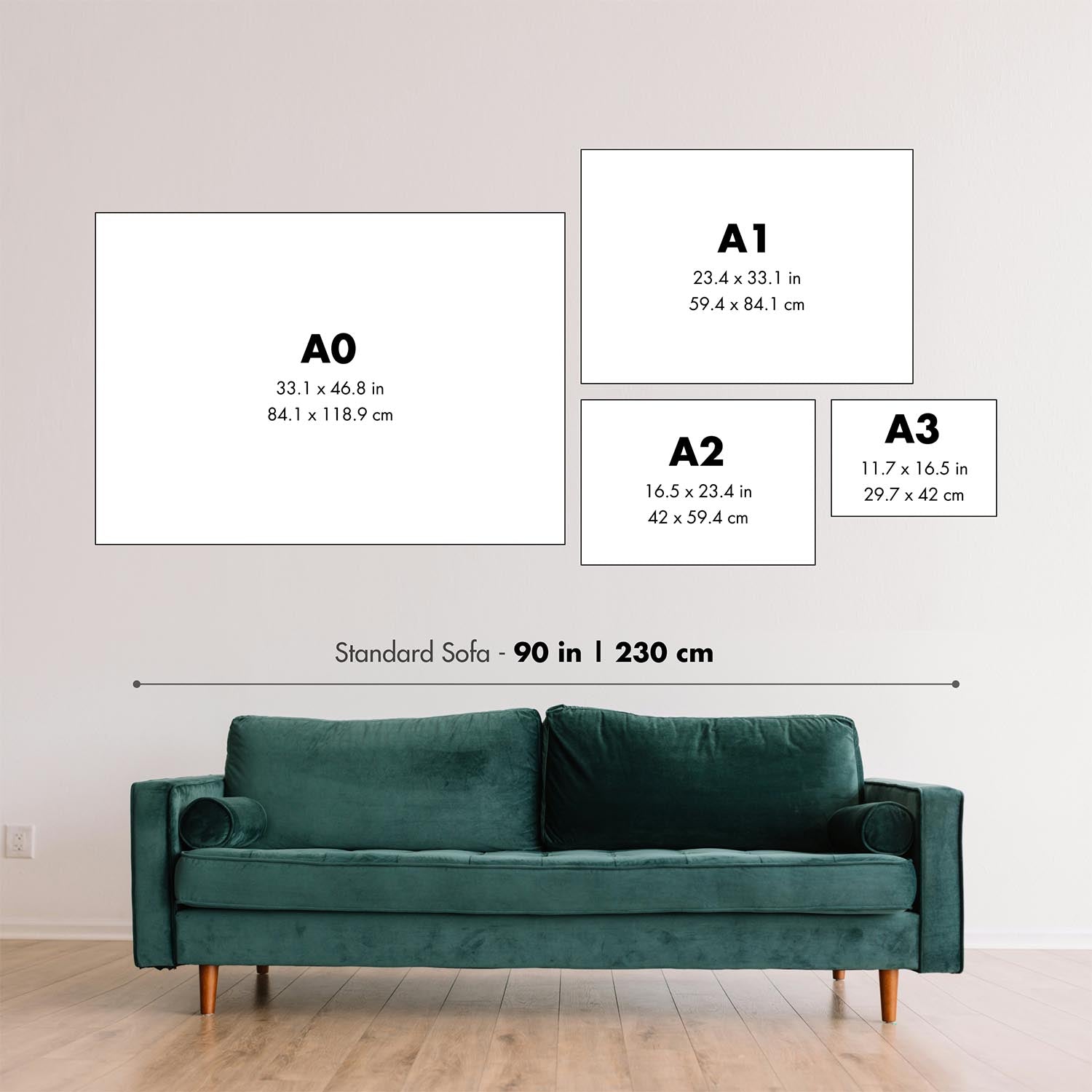
Old Double Cordiform Magellanic World Map by Oronce Fine, 1531: Magellan’s Sea, Terra Australis


-
![]() Handmade in the USA
Handmade in the USA
-
Christmas delivery: order by 11am ET Monday
Free delivery in 2-3 days
Your map should be delivered in 2-3 working days with free delivery, worldwide.
Please order by 11am ET Monday with Next Day delivery at checkout for Christmas delivery. Canvases will not arrive for Christmas. Unframed orders have a better chance of arriving in time.
New for 2024: You can send a beautiful gift preview by email, if you think your order won't arrive on time.
We make maps by hand locally in 23 countries, including the USA
![]() . If you're buying a gift for someone in another country, we will make the map locally to them.
. If you're buying a gift for someone in another country, we will make the map locally to them.You will never pay import tax or customs duty.
Some orders are now taking 5-6 days to arrive because of postal slowdowns. Please order soon to ensure you get your order before Christmas. Check my Christmas delivery guide for more info.
Express delivery is available at checkout which can reduce the delivery time to 1-2 days.
Please note that personalised maps, and larger framed maps, can take longer to produce and deliver.
If you need your order to arrive by a certain date, contact me and we can discuss your options.
-
90 day money back guarantee
ⓘ
90 days to return and refund
Products can be returned within 90 days for a full refund, or exchange for another product.
For personalised and custom made items, we may offer you store credit or a non-expiring gift card, as we cannot resell personalised orders.
If you have any questions, get in touch. For more information, see our full returns & exchanges policy.

My maps are rare, museum-grade, restored old maps sourced from libraries, auction houses and private collections across the globe.
Framing & free personalisation available
1. Select your size
➢ Pick the closest size (above)
➢ Provide the exact size in millimetres
➢ Add to bag and checkout as normal
2. Frame & personalize your map
Make your map unique with framing, hand-drawn customisation, vintage ageing, pop art text, unique 3D styling and moreGift message & custom finish

If you want to add a gift message, or a finish (jigsaw, aluminium board, etc.) that is not available here, please request it in the "order note" when you check out.
Every order is custom made, so if you need the size adjusted slightly, or printed on an unusual material, just let us know. We've done thousands of custom orders over the years, so there's (almost) nothing we can't manage.
You can also contact us before you order, if you prefer!

- Handmade locally. No import duty or tax
- FREE Delivery. Arrives in 2-3 days
- Love it or your money back
- Questions? WhatsApp me any time
Own a piece of history
5,000+ 5 star reviews


Step into the fascinating world of Renaissance cartography with Oronce Fine’s “Nova, et Integra Universi Orbis Descriptio,” a masterwork first published in 1531. This extraordinary map, the earliest known double cordiform (heart-shaped) projection of the world, stands as a testament to both the ambition and artistry of early modern mapmakers. Fine, an eminent French mathematician and geographer, ingeniously synthesized the latest discoveries of his era—most notably the voyages of Magellan and Cortez—into a vision of the globe that was both scientifically advanced and visually arresting. The map’s original Latin title, which translates to “A New and Complete Description of the Whole World,” perfectly encapsulates its groundbreaking scope and the spirit of exploration that defined the age.
Created at a time when the boundaries of the known world were rapidly expanding, Fine’s map captures the excitement and uncertainty of the early sixteenth century. It is one of the very first maps to mention the “Mare magellanicum,” honoring Ferdinand Magellan’s epochal circumnavigation. The map boldly delineates the mysterious Terra Australis—“recently discovered but not yet explored”—a vast southern continent that would tantalize explorers and geographers for centuries. Central America is richly annotated with place names reflecting the conquests and explorations of Cortez, while the North American continent is intriguingly rendered as an extension of Asia, revealing the evolving European understanding of global geography.
The map’s double cordiform projection is a marvel of geometric ingenuity, reducing the spherical earth to two elegantly interlocking heart-shaped lobes. This unique format, devised by Fine himself, would become a model for world maps for decades to follow, preceding the rise of oval and double-hemispheric projections and the eventual dominance of Mercator’s projection. The projection not only serves as a technical achievement but also imbues the map with a sense of harmony and unity, inviting the viewer to contemplate the interconnectedness of the world’s continents and oceans.
Aesthetically, Fine’s map is a triumph of Renaissance artistry. The detailed woodcut is framed by a lush floral border, flanked by two mermaids and muscular cherubs that evoke the mythic and the maritime. The French royal coat of arms is displayed with pride, while a flowing banner at the top proclaims the map’s title. The lower cartouche bears Fine’s own name, marking this as the coveted first state of the map—a rare and desirable feature for collectors and connoisseurs. Every element, from the ornate border to the meticulously engraved landmasses, reflects the humanist ideals and decorative sensibilities of its time.
Within its intricate design, the map reveals a world both familiar and fantastical. Greenland is shown as a separate island, while the Arctic is depicted as four enigmatic islands. The promontory labeled “Gaccalar”—thought to represent Labrador—juts boldly into the Atlantic. Mountain ranges, rivers, and coastlines are rendered with a detail that speaks to Fine’s dedication to accuracy, even as the limits of contemporary knowledge left vast regions shrouded in mystery. This map is not merely a record of the world as it was known in 1531; it is a celebration of discovery, imagination, and the enduring quest to chart the unknown.
Countries and regions on this map
- Europe
- Asia
- Africa
- America (North and South America, with North America depicted as part of Asia)
- Terra Australis (Southern continent, not yet explored)
- Greenland
- Gaccalar (Labrador)
- Central America (with specific place names from early Spanish exploration)
- Mare magellanicum (Magellan’s Sea, body of water)
- Arctic region (depicted as four islands)
Notable Features & Landmarks
- Double cordiform (heart-shaped) projection, split into two lobes
- Decorative floral border surrounding the map
- Two mermaids illustrated outside the map
- Two muscular cherubs (putti) depicted outside the map
- French royal coat of arms displayed prominently
- Flowing banner with the map’s title at the top
- Lower cartouche with Oronce Fine’s name (Orontius F. Delph)
- Mare magellanicum (Magellan’s Sea) labelled beyond the tip of South America
- Terra Australis ("recently discovered but not yet explored") occupies much of the southern lobe
- Four islands depicted at the North Pole
- Separate island labelled as Greenland
- Large promontory labelled Gaccalar (supposedly Labrador) extending from North America
- Numerous place names in Central America reflecting early Spanish exploration
- Detailed physical features such as mountain ranges and rivers
Historical and design context
- First double cordiform (heart-shaped) world map ever produced
- Created by Oronce Fine, an eminent French cartographer and mathematician, in 1531
- One of the earliest maps to mention Magellan (Mare magellanicum)
- Became a model for world maps for several decades before the rise of oval and double-hemispheric projections, and Mercator’s projection
- Based on sophisticated geometric principles for depicting the spherical earth in two dimensions
- Detailed woodcut with Renaissance artistry and humanist ideals
- First appeared in the 1532 Paris edition of Johann Huttich and Simon Grynaeus's Novus orbis regionum
- The first state of the map, the only one to feature Oronce Fine’s name in the lower cartouche
- Celebrates the spirit of exploration and discovery during the early sixteenth century
Please double check the images to make sure that a specific town or place is shown on this map. You can also get in touch and ask us to check the map for you.
This map looks great at every size, but I always recommend going for a larger size if you have space. That way you can easily make out all of the details.
This map looks amazing at sizes all the way up to 70in (180cm). If you are looking for a larger map, please get in touch.
The model in the listing images is holding the 18x24in (45x60cm) version of this map.
The fifth listing image shows an example of my map personalisation service.
If you’re looking for something slightly different, check out my collection of the best old maps to see if something else catches your eye.
Please contact me to check if a certain location, landmark or feature is shown on this map.
This would make a wonderful birthday, Christmas, Father's Day, work leaving, anniversary or housewarming gift for someone from the areas covered by this map.
This map is available as a giclée print on acid free archival matte paper, or you can buy it framed. The frame is a nice, simple black frame that suits most aesthetics. Please get in touch if you'd like a different frame colour or material. My frames are glazed with super-clear museum-grade acrylic (perspex/acrylite), which is significantly less reflective than glass, safer, and will always arrive in perfect condition.
This map is also available as a float framed canvas, sometimes known as a shadow gap framed canvas or canvas floater. The map is printed on artist's cotton canvas and then stretched over a handmade box frame. We then "float" the canvas inside a wooden frame, which is available in a range of colours (black, dark brown, oak, antique gold and white). This is a wonderful way to present a map without glazing in front. See some examples of float framed canvas maps and explore the differences between my different finishes.
For something truly unique, this map is also available in "Unique 3D", our trademarked process that dramatically transforms the map so that it has a wonderful sense of depth. We combine the original map with detailed topography and elevation data, so that mountains and the terrain really "pop". For more info and examples of 3D maps, check my Unique 3D page.
For most orders, delivery time is about 3 working days. Personalised and customised products take longer, as I have to do the personalisation and send it to you for approval, which usually takes 1 or 2 days.
Please note that very large framed orders usually take longer to make and deliver.
If you need your order to arrive by a certain date, please contact me before you order so that we can find the best way of making sure you get your order in time.
I print and frame maps and artwork in 23 countries around the world. This means your order will be made locally, which cuts down on delivery time and ensures that it won't be damaged during delivery. You'll never pay customs or import duty, and we'll put less CO2 into the air.
All of my maps and art prints are well packaged and sent in a rugged tube if unframed, or surrounded by foam if framed.
I try to send out all orders within 1 or 2 days of receiving your order, though some products (like face masks, mugs and tote bags) can take longer to make.
If you select Express Delivery at checkout your order we will prioritise your order and send it out by 1-day courier (Fedex, DHL, UPS, Parcelforce).
Next Day delivery is also available in some countries (US, UK, Singapore, UAE) but please try to order early in the day so that we can get it sent out on time.
My standard frame is a gallery style black ash hardwood frame. It is simple and quite modern looking. My standard frame is around 20mm (0.8in) wide.
I use super-clear acrylic (perspex/acrylite) for the frame glass. It's lighter and safer than glass - and it looks better, as the reflectivity is lower.
Six standard frame colours are available for free (black, dark brown, dark grey, oak, white and antique gold). Custom framing and mounting/matting is available if you're looking for something else.
Most maps, art and illustrations are also available as a framed canvas. We use matte (not shiny) cotton canvas, stretch it over a sustainably sourced box wood frame, and then 'float' the piece within a wood frame. The end result is quite beautiful, and there's no glazing to get in the way.
All frames are provided "ready to hang", with either a string or brackets on the back. Very large frames will have heavy duty hanging plates and/or a mounting baton. If you have any questions, please get in touch.
See some examples of my framed maps and framed canvas maps.
Alternatively, I can also supply old maps and artwork on canvas, foam board, cotton rag and other materials.
If you want to frame your map or artwork yourself, please read my size guide first.
My maps are extremely high quality reproductions of original maps.
I source original, rare maps from libraries, auction houses and private collections around the world, restore them at my London workshop, and then use specialist giclée inks and printers to create beautiful maps that look even better than the original.
My maps are printed on acid-free archival matte (not glossy) paper that feels very high quality and almost like card. In technical terms the paper weight/thickness is 10mil/200gsm. It's perfect for framing.
I print with Epson ultrachrome giclée UV fade resistant pigment inks - some of the best inks you can find.
I can also make maps on canvas, cotton rag and other exotic materials.
Learn more about The Unique Maps Co.
Map personalisation
If you're looking for the perfect anniversary or housewarming gift, I can personalise your map to make it truly unique. For example, I can add a short message, or highlight an important location, or add your family's coat of arms.
The options are almost infinite. Please see my map personalisation page for some wonderful examples of what's possible.
To order a personalised map, select "personalise your map" before adding it to your basket.
Get in touch if you're looking for more complex customisations and personalisations.
Map ageing
I have been asked hundreds of times over the years by customers if they could buy a map that looks even older.
Well, now you can, by selecting Aged before you add a map to your basket.
All the product photos you see on this page show the map in its Original form. This is what the map looks like today.
If you select Aged, I will age your map by hand, using a special and unique process developed through years of studying old maps, talking to researchers to understand the chemistry of aging paper, and of course... lots of practice!
If you're unsure, stick to the Original colour of the map. If you want something a bit darker and older looking, go for Aged.
If you are not happy with your order for any reason, contact me and I'll get it fixed ASAP, free of charge. Please see my returns and refund policy for more information.
I am very confident you will like your restored map or art print. I have been doing this since 1984. I'm a 5-star Etsy seller. I have sold tens of thousands of maps and art prints and have over 5,000 real 5-star reviews. My work has been featured in interior design magazines, on the BBC, and on the walls of dozens of 5-star hotels.
I use a unique process to restore maps and artwork that is massively time consuming and labour intensive. Hunting down the original maps and illustrations can take months. I use state of the art and eye-wateringly expensive technology to scan and restore them. As a result, I guarantee my maps and art prints are a cut above the rest. I stand by my products and will always make sure you're 100% happy with what you receive.
Almost all of my maps and art prints look amazing at large sizes (200cm, 6.5ft+) and I can frame and deliver them to you as well, via special oversized courier. Contact me to discuss your specific needs.
Or try searching for something!
This service is currently unavailable,
sorry for the inconvenience.
Pair it with a frame
Frame options are for visualization purposes only.
FRAME STYLE
MATTING SIZE
BUILDING YOUR EXPERIENCE
powered by Blankwall
Take a few steps back and let your camera see more of the scene.
powered by Blankwall
Was this experience helpful?
Step into the fascinating world of Renaissance cartography with Oronce Fine’s “Nova, et Integra Universi Orbis Descriptio,” a masterwork first published in 1531. This extraordinary map, the earliest known double cordiform (heart-shaped) projection of the world, stands as a testament to both the ambition and artistry of early modern mapmakers. Fine, an eminent French mathematician and geographer, ingeniously synthesized the latest discoveries of his era—most notably the voyages of Magellan and Cortez—into a vision of the globe that was both scientifically advanced and visually arresting. The map’s original Latin title, which translates to “A New and Complete Description of the Whole World,” perfectly encapsulates its groundbreaking scope and the spirit of exploration that defined the age.
Created at a time when the boundaries of the known world were rapidly expanding, Fine’s map captures the excitement and uncertainty of the early sixteenth century. It is one of the very first maps to mention the “Mare magellanicum,” honoring Ferdinand Magellan’s epochal circumnavigation. The map boldly delineates the mysterious Terra Australis—“recently discovered but not yet explored”—a vast southern continent that would tantalize explorers and geographers for centuries. Central America is richly annotated with place names reflecting the conquests and explorations of Cortez, while the North American continent is intriguingly rendered as an extension of Asia, revealing the evolving European understanding of global geography.
The map’s double cordiform projection is a marvel of geometric ingenuity, reducing the spherical earth to two elegantly interlocking heart-shaped lobes. This unique format, devised by Fine himself, would become a model for world maps for decades to follow, preceding the rise of oval and double-hemispheric projections and the eventual dominance of Mercator’s projection. The projection not only serves as a technical achievement but also imbues the map with a sense of harmony and unity, inviting the viewer to contemplate the interconnectedness of the world’s continents and oceans.
Aesthetically, Fine’s map is a triumph of Renaissance artistry. The detailed woodcut is framed by a lush floral border, flanked by two mermaids and muscular cherubs that evoke the mythic and the maritime. The French royal coat of arms is displayed with pride, while a flowing banner at the top proclaims the map’s title. The lower cartouche bears Fine’s own name, marking this as the coveted first state of the map—a rare and desirable feature for collectors and connoisseurs. Every element, from the ornate border to the meticulously engraved landmasses, reflects the humanist ideals and decorative sensibilities of its time.
Within its intricate design, the map reveals a world both familiar and fantastical. Greenland is shown as a separate island, while the Arctic is depicted as four enigmatic islands. The promontory labeled “Gaccalar”—thought to represent Labrador—juts boldly into the Atlantic. Mountain ranges, rivers, and coastlines are rendered with a detail that speaks to Fine’s dedication to accuracy, even as the limits of contemporary knowledge left vast regions shrouded in mystery. This map is not merely a record of the world as it was known in 1531; it is a celebration of discovery, imagination, and the enduring quest to chart the unknown.
Countries and regions on this map
- Europe
- Asia
- Africa
- America (North and South America, with North America depicted as part of Asia)
- Terra Australis (Southern continent, not yet explored)
- Greenland
- Gaccalar (Labrador)
- Central America (with specific place names from early Spanish exploration)
- Mare magellanicum (Magellan’s Sea, body of water)
- Arctic region (depicted as four islands)
Notable Features & Landmarks
- Double cordiform (heart-shaped) projection, split into two lobes
- Decorative floral border surrounding the map
- Two mermaids illustrated outside the map
- Two muscular cherubs (putti) depicted outside the map
- French royal coat of arms displayed prominently
- Flowing banner with the map’s title at the top
- Lower cartouche with Oronce Fine’s name (Orontius F. Delph)
- Mare magellanicum (Magellan’s Sea) labelled beyond the tip of South America
- Terra Australis ("recently discovered but not yet explored") occupies much of the southern lobe
- Four islands depicted at the North Pole
- Separate island labelled as Greenland
- Large promontory labelled Gaccalar (supposedly Labrador) extending from North America
- Numerous place names in Central America reflecting early Spanish exploration
- Detailed physical features such as mountain ranges and rivers
Historical and design context
- First double cordiform (heart-shaped) world map ever produced
- Created by Oronce Fine, an eminent French cartographer and mathematician, in 1531
- One of the earliest maps to mention Magellan (Mare magellanicum)
- Became a model for world maps for several decades before the rise of oval and double-hemispheric projections, and Mercator’s projection
- Based on sophisticated geometric principles for depicting the spherical earth in two dimensions
- Detailed woodcut with Renaissance artistry and humanist ideals
- First appeared in the 1532 Paris edition of Johann Huttich and Simon Grynaeus's Novus orbis regionum
- The first state of the map, the only one to feature Oronce Fine’s name in the lower cartouche
- Celebrates the spirit of exploration and discovery during the early sixteenth century
Please double check the images to make sure that a specific town or place is shown on this map. You can also get in touch and ask us to check the map for you.
This map looks great at every size, but I always recommend going for a larger size if you have space. That way you can easily make out all of the details.
This map looks amazing at sizes all the way up to 70in (180cm). If you are looking for a larger map, please get in touch.
The model in the listing images is holding the 18x24in (45x60cm) version of this map.
The fifth listing image shows an example of my map personalisation service.
If you’re looking for something slightly different, check out my collection of the best old maps to see if something else catches your eye.
Please contact me to check if a certain location, landmark or feature is shown on this map.
This would make a wonderful birthday, Christmas, Father's Day, work leaving, anniversary or housewarming gift for someone from the areas covered by this map.
This map is available as a giclée print on acid free archival matte paper, or you can buy it framed. The frame is a nice, simple black frame that suits most aesthetics. Please get in touch if you'd like a different frame colour or material. My frames are glazed with super-clear museum-grade acrylic (perspex/acrylite), which is significantly less reflective than glass, safer, and will always arrive in perfect condition.








